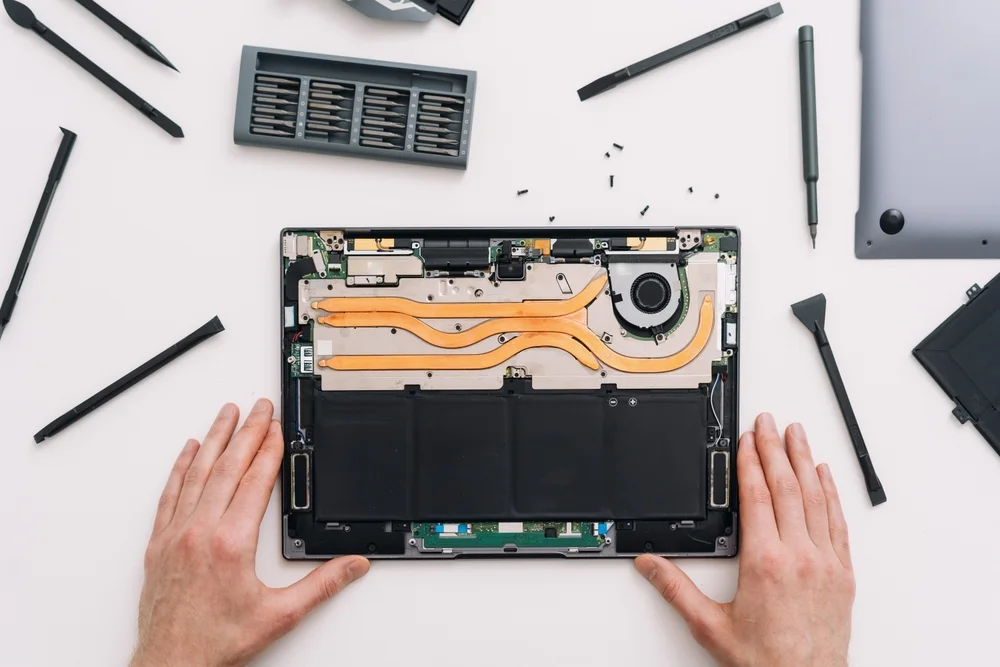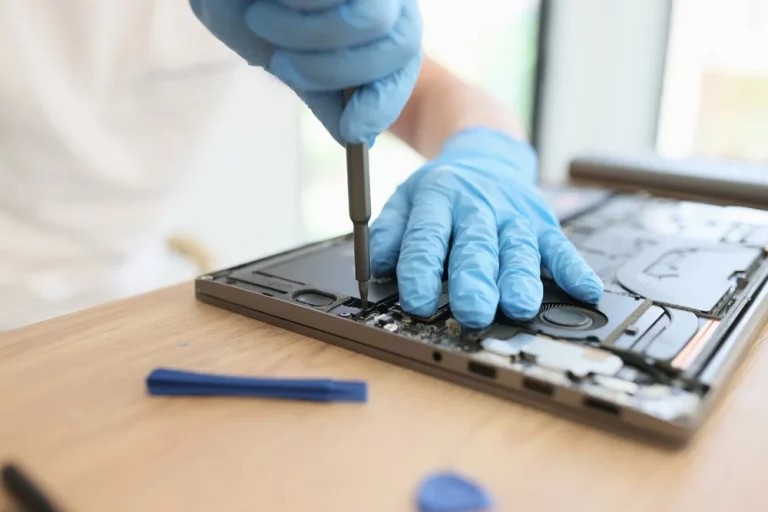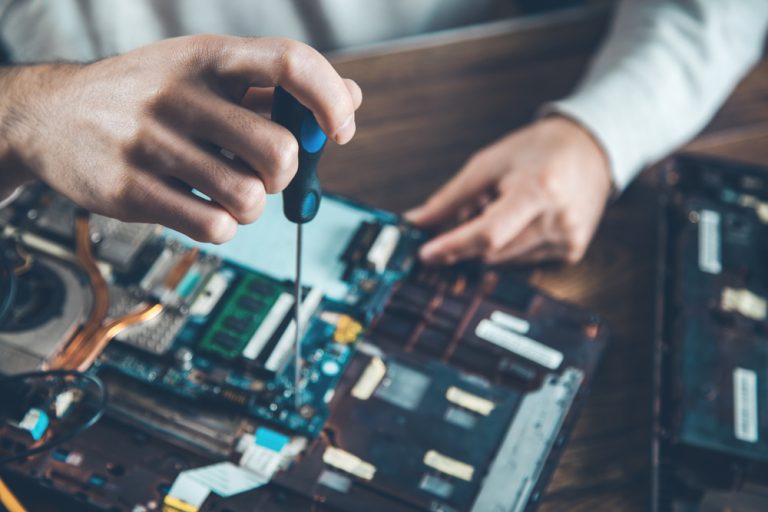DIY vs Professional Repairs – What You Need to Know

When something breaks or malfunctions, one of the first decisions you face is whether to tackle the repair yourself or seek professional help. The choice between DIY (Do It Yourself) and professional repairs can significantly impact the outcome, costs, and time involved. This guide will explore the key factors to consider, compare the benefits and drawbacks of each approach, and help you make an informed decision on the best course of action for your specific repair needs.
Understanding DIY Repairs
What is DIY Repair?
DIY repair refers to the process of fixing something yourself rather than hiring a professional. This can range from simple tasks like changing a light bulb to more complex projects such as repairing a broken laptop or a malfunctioning appliance.
Advantages of DIY Repairs
- Cost Savings: One of the primary reasons people opt for DIY repairs is the potential for cost savings. By doing the repair yourself, you can avoid labour charges and often purchase parts at a lower cost compared to professional repair services.
- Learning Experience: DIY repairs can be a valuable learning experience. They offer a chance to develop new skills, gain hands-on experience, and better understand how things work. This knowledge can be useful for future repairs and maintenance.
- Flexibility: DIY repairs allow you to work on your own schedule. You’re not bound by a professional’s availability, which means you can start and complete the repair at your convenience.
- Sense of Accomplishment: Successfully completing a repair on your own can provide a strong sense of achievement and satisfaction. It’s rewarding to see your hard work pay off and restore functionality to an item.
Disadvantages of DIY Repairs
- Risk of Further Damage: Without the proper knowledge or tools, there’s a risk of causing additional damage. This can make the repair more costly in the long run, especially if professional intervention becomes necessary to fix the mistakes made during the DIY attempt.
- Time-Consuming: DIY repairs can be time-consuming, especially if you’re unfamiliar with the repair process. Researching, sourcing parts, and troubleshooting can take considerable time, potentially leading to frustration and delays.
- Limited Expertise: While DIY repairs can be effective for simple tasks, they might not be suitable for more complex problems. Lack of expertise can result in incomplete or ineffective repairs, which may require professional intervention later.
- Safety Risks: Some repairs involve hazardous materials or require handling electrical components. Without proper training and safety measures, DIY repairs can pose safety risks to you and your property.
Common DIY Repair Tasks
- Changing a Lightbulb: Replacing a burnt-out lightbulb is a simple and common DIY task that requires minimal tools and expertise.
- Fixing a Leaky Faucet: Many leaky faucets can be repaired with a basic understanding of plumbing and the right tools.
- Cleaning a Computer: Dusting and cleaning the internal components of a computer can help improve performance and prevent overheating.
- Replacing a Car Battery: Changing a car battery is a manageable task for many DIY enthusiasts with basic automotive knowledge.
Understanding Professional Repairs
What is Professional Repair?
Professional repair involves hiring a trained technician or specialist to address and fix a problem. Professionals typically have extensive knowledge, experience, and tools required to handle a wide range of repair issues.
Advantages of Professional Repairs
- Expertise and Experience: Professionals bring a high level of expertise and experience to the table. They are trained to diagnose and repair a wide variety of issues, often with specialised knowledge for specific types of equipment or devices.
- Quality and Reliability: Professional repairs generally offer higher reliability and quality. Technicians are skilled in performing repairs correctly and efficiently, reducing the risk of further damage and ensuring that the repair is done right the first time.
- Warranty and Guarantees: Many professional repair services offer warranties or guarantees on their work. This provides peace of mind, knowing that if something goes wrong after the repair, the issue can be addressed at no additional cost.
- Time Efficiency: Professionals can often complete repairs more quickly than a DIY approach, especially for complex issues. Their experience allows them to work efficiently, minimizing downtime and inconvenience.
- Safety: Professionals are trained to handle repairs safely, including working with hazardous materials or electrical components. This reduces the risk of accidents or damage to your property.
Disadvantages of Professional Repairs
- Higher Cost: Professional repairs can be more expensive due to labour charges, service fees, and markups on parts. This can be a significant factor if you’re on a tight budget.
- Dependence on Availability: Scheduling a professional repair may involve waiting for an appointment or coordinating with the technician’s availability. This can be inconvenient if you need a repair done urgently.
- Less Personal Control: With professional repairs, you might have less control over the repair process. You’ll need to trust the technician to handle the repair according to your specifications and preferences.
Common Professional Repair Services
- Electronics Repair: Professional technicians are skilled in repairing a wide range of electronic devices, including laptops, smartphones, and gaming consoles. For example, if your PlayStation is malfunctioning, professional services can address issues effectively. You can find more information on comprehensive PS4 & PS5 console repair services.
- Appliance Repair: Specialists can repair household appliances such as refrigerators, washing machines, and ovens, ensuring that they function correctly and safely.
- Vehicle Repair: Automotive technicians are trained to handle car repairs, from routine maintenance to complex mechanical issues.
- HVAC Repair: Heating, ventilation, and air conditioning systems require professional expertise for installation, maintenance, and repair.
Comparing DIY and Professional Repairs
Cost
- DIY: Generally cheaper as you only pay for parts and tools. However, if the repair is unsuccessful, additional costs may arise if professional help is required.
- Professional: Higher initial cost due to labour and service fees. The expense can be justified by the quality and reliability of the repair.
Time
- DIY: Can be time-consuming, particularly if you’re unfamiliar with the repair process. Additional time may be required for research and troubleshooting.
- Professional: Typically faster, especially for complex repairs. Professionals can complete repairs efficiently, reducing downtime.
Skill and Expertise
- DIY: Depends on your skill level and knowledge. Simple repairs may be manageable, but complex issues require specialised expertise.
- Professional: Technicians have the necessary skills and experience for a wide range of repairs. They are equipped to handle both common and unusual problems effectively.
Safety
- DIY: Risk of accidents or further damage if proper safety precautions aren’t taken. Some repairs involve hazardous materials or electrical components.
- Professional: Trained to handle repairs safely, reducing the risk of accidents and ensuring that repairs are performed correctly.
Making the Right Choice
Assess the Repair
- Complexity: For simple repairs, such as changing a lightbulb or cleaning a computer, DIY is often sufficient. For more complex issues, such as a malfunctioning laptop or car engine, professional help may be needed.
- Skill Level: Consider your own skills and experience. If you’re comfortable with basic repairs and have the necessary tools, DIY may be a viable option. For tasks beyond your expertise, a professional is recommended.
Consider the Cost
- Budget: Evaluate your budget and determine if you can afford professional repairs. Compare the cost of DIY repairs, including parts and tools, with the cost of professional services.
Evaluate the Risks
- Potential Damage: Assess the risk of causing further damage. If there’s a high risk of exacerbating the problem, professional repair may be the safer choice.
- Safety: Ensure you’re aware of any safety risks involved in the repair. If a repair involves hazardous materials or electrical components, professional assistance may be necessary.
Research and Recommendations
- DIY Resources: If considering DIY, research reliable resources such as tutorials, guides, and forums. Ensure you have access to accurate information and instructions.
- Professional Services: Look for reputable repair services with positive reviews and recommendations. Ensure that the professionals are qualified and experienced in handling the type of repair needed.
| Aspect | DIY Repairs | Professional Repairs |
|---|---|---|
| Cost | Lower initial cost, but potential for higher costs if mistakes are made. | Higher cost due to labour fees, but often more reliable and includes warranties. |
| Time | Can be time-consuming, especially for beginners. | Typically faster, especially for complex repairs. |
| Expertise | Depends on your skill level; suitable for simple tasks. | High level of expertise and experience; ideal for complex issues. |
| Safety | Risk of accidents, especially with electrical or hazardous materials. | Trained to handle safety concerns, reducing risk. |
| Learning Experience | Great opportunity to learn and develop new skills. | Limited learning opportunity; focuses on results. |
| Reliability | Varies; successful if done correctly, but can be unreliable if not. | Generally more reliable with a lower chance of further issues. |
Conclusion
Choosing between DIY and professional repairs involves weighing the advantages and disadvantages of each approach. DIY repairs can offer cost savings, learning opportunities, and flexibility, but they come with risks of additional damage and safety concerns. Professional repairs provide expertise, quality, and reliability, though they can be more expensive and less flexible.
By assessing the complexity of the repair, your skill level, budget, and potential risks, you can make an informed decision on the best approach. Whether you choose to tackle the repair yourself or enlist professional help, understanding the key factors involved will ensure that you achieve the best outcome for your repair needs.
For further insights into technology and repairs, you might find these articles helpful:
- Exploring Apple’s Vision Pro – A Comprehensive Overview: Offers insights into cutting-edge technology that might influence your decision on repairs and upgrades.
- Decoding the Galaxy S24 Ultra Camera – Evolution or Regression?: Provides information on the latest tech advancements, helping you stay informed about the latest developments in technology.
By carefully considering your options and making an informed choice, you can ensure that your repairs are handled effectively, saving you time, money, and stress.






